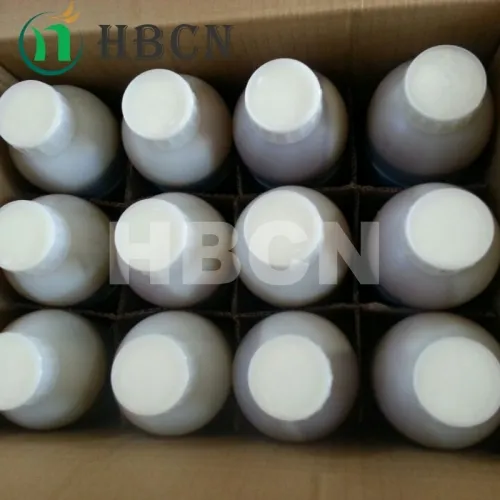
Nov . 21, 2024 12:32 Back to list
abamectin 3.6% ec
The Role of Abamectin 3.6% EC in Modern Agriculture
Abamectin 3.6% EC (Emulsifiable Concentrate) is an important chemical compound widely used in agriculture for pest control. Derived from the fermentation of the bacterium *Streptomyces avermitilis*, abamectin is a member of the avermectin family, which has become a critical tool for farmers seeking effective solutions to combat agricultural pests. This article explores the properties, applications, benefits, and precautions of using Abamectin 3.6% EC.
Properties of Abamectin 3.6% EC
Abamectin functions as a potent insecticide and acaricide. It works by affecting the nervous system of pests, causing paralysis and subsequent death. The 3.6% formulation signifies that 3.6g of active ingredient is present per 100 mL of the product, making it a concentrated form that provides significant efficacy even in small quantities. Its effectiveness spans a variety of insects, including mites, leafhoppers, thrips, and whiteflies, making it versatile for different crops.
Applications in Agriculture
The use of Abamectin 3.6% EC is prevalent across numerous agricultural sectors. It finds applications in horticulture, fruit, and vegetable production, and even in ornamental gardening. In many cases, it is used as a foliar spray to ensure direct contact with target pests. Importantly, the safe application according to guidelines allows for the protection of crops while reducing the risk of pest resistance, a growing concern in pest management.
One of the key features of abamectin is its residual activity, which can provide extended protection against re-infestation. This is particularly beneficial for crops that are susceptible to recurring pest issues. By integrating Abamectin into an overall pest management strategy, farmers can minimize crop damage, enhance yield quality, and ultimately secure better market prices for their produce.
Benefits of Using Abamectin 3.6% EC
The application of Abamectin 3.6% EC offers several benefits. Firstly, its high efficacy allows for lower application rates compared to many traditional insecticides, leading to reduced chemical input costs. This is particularly advantageous in an age where sustainable agriculture is becoming a priority.
abamectin 3.6% ec

Secondly, due to its mode of action, it targets specific pests and has minimal impact on beneficial insects when used correctly. This selectivity helps maintain ecological balance and promotes biodiversity, which is vital for sustainable farming practices.
Moreover, abamectin's low toxicity to humans and animals makes it a safer choice for farmworkers when used following safety guidelines. Its rapid biodegradation in the environment further reduces the risk of long-term ecological consequences.
Precautions and Considerations
Despite its advantages, there are important considerations for the responsible use of Abamectin 3.6% EC. Farmers must adhere to recommended application rates to avoid potential negative side effects, including the risk of developing resistant pest populations. Rotating with products that have different modes of action can help mitigate resistance issues.
It is also crucial to conduct thorough assessments of local pest populations and apply abamectin only when necessary, rather than as a preventive measure. Timing applications to target pests at the most vulnerable stages in their life cycle can enhance effectiveness.
Lastly, users should be aware of pre-harvest intervals to ensure that residues do not exceed safe levels at the time of harvest. This is essential to comply with regulations and ensure food safety.
Conclusion
Abamectin 3.6% EC represents a significant advancement in pest control within agricultural practices. Its effectiveness, versatility, and reduced environmental impact position it as a valuable asset for modern farmers aiming to protect their crops while adhering to sustainable practices. As agriculture continues to evolve, the prudent use of such chemicals, combined with integrated pest management strategies, will play a critical role in securing food supply chains and promoting environmental stewardship. By understanding and respecting the products we use, farmers can contribute to a healthier ecosystem, ensuring sustainable practices for future generations.
-
Kasugamycin Fungicide: Efficient Bacterial & Fungal Control
NewsAug.02,2025
-
Emamectin Benzoate: AI-Optimized Pest Control Solution
NewsAug.01,2025
-
Best Abamectin 95% | Top Pesticide for Crop Protection
NewsJul.31,2025
-
Insecticide Spirotetramat 11% + Thiacloprid 11% SC at Good Price
NewsJul.30,2025
-
Best Abamectin SDS - Premium Quality & Reliable Safety Data
NewsJul.29,2025
-
Agrochemicals Pesticides Solutions for Sustainable Farming
NewsJul.29,2025
